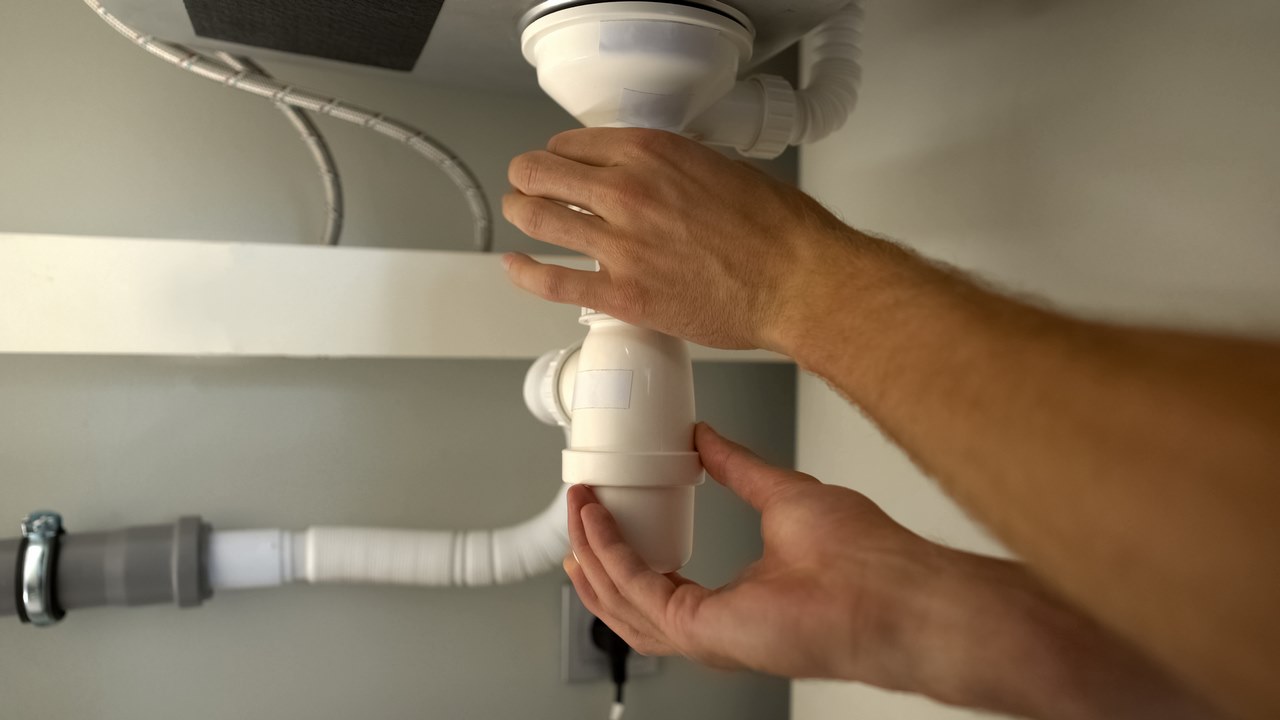If you observe your house’s plumbing system and notice a pipe extending on your roof, this is probably a plumbing vent. These plumbing vents are linked to your fixtures, like your sink or toilet.
These are used to allow the gases from these sewage drains to be expelled, thus regulating the air pressure in your plumbing system.

Accumulation of gases in your plumbing system, whether sink or toilet, can be harmful if inhaled. Aside from that, these vents help by bringing oxygen to the plumbing system, which quickly degrades waste products.
Now that you know the importance of plumbing vents, you might be curious about how to install one in your home, especially under your sink. Here are the steps to install an under-sink plumbing vent:
Installing a plumbing vent under your sink is relatively easy. But you must familiarize yourself with the local plumbing or building codes because there are restrictions about the type of material and size of the pipes.
These codes might also include the distance between the vent pipes, the sink fixtures, and the placement of the actual vent. Some regulations require you to obtain a permit first or consult professional help for installation.
So, keep in mind that you have to understand the details of the plumbing codes first before beginning your installation.
You can ask for a piece of advice from a local contractor and ask some questions regarding the material and building standards.
Read Also:
Now that you have considered your local building codes, it’s time to plan the layout.
Planning the arrangement of the drains, the pipe extension, and the plumbing vent will help you quickly assemble it once you have acquired the materials that fit perfectly under your sink.
To achieve accuracy, you should measure the dimensions of your sink before buying the materials. If necessary, it’s good to leave some space for adjustments.
Having a layout will allow you to foresee different size constraints of the pipe. It also determines the number of fixtures you can link into your pipelines.
Once you have formulated a foolproof plumbing layout, you can now choose what type of pipe material best fits your budget and your needs.
It would help if you’d also consider the following factors, such as durability, strength, weight, resistance to corrosion, and the flexibility of the pipe.
Most plumbing vents are available in small sizes with a diameter of less than an inch. If that’s the case, you can use plastic pipes like polyvinyl chloride (PVC) or acrylonitrile butadiene styrene (ABS) pipes.
Both of them are non-toxic and abrasion-resistant. But to compare, here are their key differences:
ABS: easier to install, more rigid, likely to deform if exposed to heat
PVC: slightly challenging to install, flexible and durable
All in all, plastic pipes are known for being inexpensive, having high corrosion resistance, and being lightweight. Aside from that, plastic pipes have a pressure class. The higher the pressure class, the more pressure the pipe can handle.
Aside from plastic pipes, metal pipes, like steel, copper, or cast-iron pipes, are available.
One of the main advantages of metal pipes is that they last longer than their plastic counterparts. It also doesn’t need to be calibrated as often as plastic pipes during installation.
Now you can take the materials together and begin connecting the joints. This includes the extension pipe, pipe extensions or connectors, and sanitary tee.
Before putting all the pipes together under the sink, prime the ends of the pipes extensions before applying pipe cement glue. If you’re using plastic pipes, make sure there’s a sufficient distance where the waste line drops vertically.
Also, note that the vent pipes should be directed outside the building, usually sticking up through the roof. This will allow the toxic gases or fumes to leave your plumbing system efficiently.
If you’re unsure if you did well in your plumbing vent installation under the sink, it would be best to contact your local plumber to help you out, or you could hire them to do the job instead if you’re busy.
Doing this will save you time and spare you from worrying if you’re doing the right procedure and if you’ve complied with the local residence area building codes.
Installing a plumbing vent under your sink can prevent poor ventilation in your house that will inevitably expose your family to toxic fumes. Understanding the layout and using the right materials will help your plumbing system last longer.
You must also adhere to the building codes imposed on your local residence. It would be best if you hired a professional plumber to do all the installation for you to ensure code regulations are satisfied and to keep your family safe.